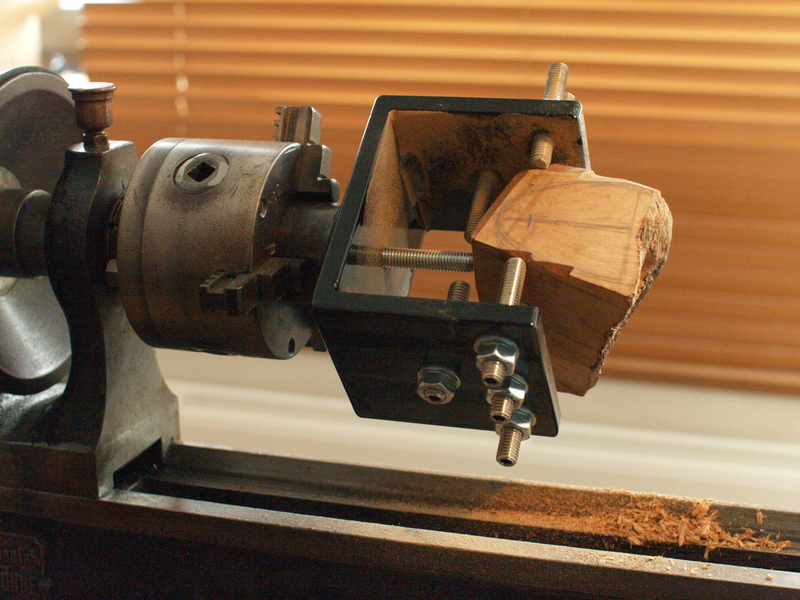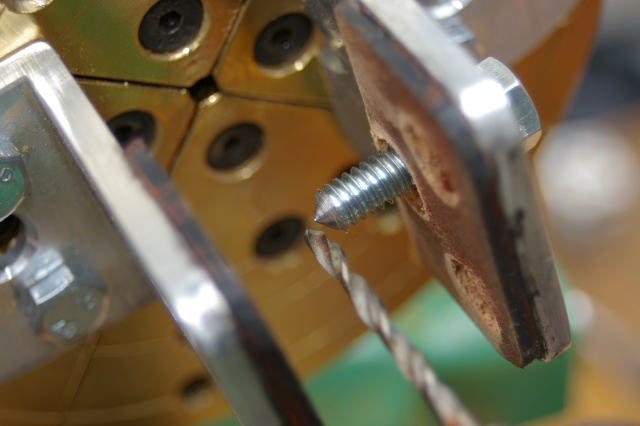
To give credit to where credit is due, apparently this was based on one by Bo, that was painted red, possibly to hide blood but more likely to reinforce the awareness of how deadly a design this can be.
Steffen requested that I share the results of my own work on this, so here is, DoomChuck, my version of this wonderful and deadly contraption.
Mine is probably all the more dangerous, because it is not as obviously dangerous. This is for use at low speeds and with great care. Due to projecting parts and potential for great imbalance.
I looked at as many images and videos of stummels being turned before finalizing my design. The DoomChuck has the convenience and limitation of being self centering, but combines the basic functionality and convenience of a stummel chuck and the bolt chuck.

Here is the chuck at it's widest open state. If I had made it a bit differently, the aluminum brackets could be reversed and add 4 inches to the possible chucking range. If I did this, I would probably need to use steel bolts instead of the plastic ones I am using. I have no plan to ever run a Doomchuck in the other configuration, as it would be at least as scary as the original, but it is a possibility.

This is mounted on one of the Penn State Industries Small Flat Jaw sets. http://www.pennstateind.com/store/CSC3000CTN.html

The bolts can reach the center if the jaw is closed to it's minimum gap.

Since I mangled down six plastic bolts, I can also use the full length ones or even use metal ones in case I need to.

The nuts are all up against the wood, and need to be secured back against the aluminum jaws before operation.

Since the whole thing can be spun around, reaching the nuts is not as hard a task as it could be.

By making this out of aluminum and plastic, I have managed to reduce the weight, expense and potential instability of the system without sacrificing strength or reasonable durability. If I need to use longer bolts to articulate the grip on an odd object or I need pointed ends to grip, I will have to use steel bolts. Plastic bolts will demonstrate instability if the length is too great.

Here it is with the nuts locking the bolts into position. Now it is ready to spin up, for the first time.

Here it is spinning away. Note that the lathe itself is reasonably well focused in this picture. This demonstrates that despite all the issues possible, in this case, the load is well balanced.
Later on, I will also make a gripper facing to line the jaws with for when I don't need the articulated screws. In this configuration it will be no more dangerous than a conventional stummel chuck. I will still call it 'DoomChuck!' because I never grew up, and think it sounds cool.
Bob
